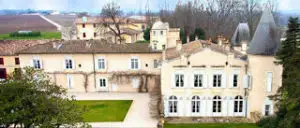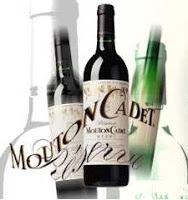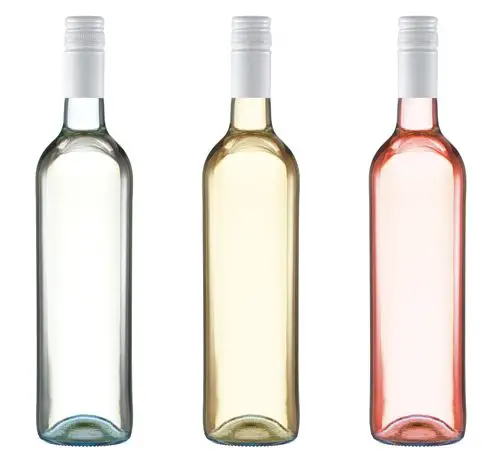I suppose the answer to the question which is the biggest brand out of the two Rothschild châteaux is Lafite. Why? A couple of reasons – it was the “first” of the First in the 1855 Classification, compared to Mouton who had to battle for their First Growth status, it’s globally more recognised than its cousin – and by globally I mean that the Chinese market adore Lafite and it’s prices reflect this. However the two châteaux have more in common than you think.
it was the “first” of the First in the 1855 Classification, compared to Mouton who had to battle for their First Growth status, it’s globally more recognised than its cousin – and by globally I mean that the Chinese market adore Lafite and it’s prices reflect this. However the two châteaux have more in common than you think.
As far as brands go they both have estates in South America: Mouton has Alma Viva in Chile and Lafite has Vina Los Vascos in Chile and Bodega Caro in Argentina.
They both have estates in the Languedoc: Mouton has Domaine de Baron’arques and Lafite has Château Aussières. They both own classified growths:
Mouton owns the 5th Growths Châteaux Clerc Milon and d’Armhailac. Lafite owns the 4th Growth Château Duhart Milon. Lafite also owns Châteaux l’Evangile from Pomerol, Paradis Casseuil from the Entre deux Mers and Peyre Lebade from the Haut Médoc. Lafite’s Second Wine Carruades de Lafite is of such standing that it holds the same prestige as that of a classified growth.
growth.
They both have First Growth Sauternes: Lafite owns Château Rieussec and Mouton has exclusive rights to Château Coutet. When you consider that the French châteaux that Lafite and Mouton own make Second wines and other labels you start to realise that the output of wine coming from these vineyards is quite substantial.
As far as mirroring one another is concerned there is one discrepancy – Lafite has just announced the creation of a new châteaux in China and Mouton has been established in the USA for some time with the development of Opus One in California – a joint venture between Baron Philippe de Rothschild and Robert Mondavi creating a Bordeaux style blend  based on Napa Valley Cabernet Sauvignon.
based on Napa Valley Cabernet Sauvignon.
As far as Lafite and Mouton’s generic, modestly priced wines (well, modest in comparison to the premium wines) go they sell million of bottles each year. Both Lafite and Mouton have expanded their range of branded wines, including ranges of varietal wines from their New World estates.
I suppose that Mouton Rothschild has the edge over Lafite in this respect – they have been producing Mouton Cadet for a number of decades and it is now considered to be Bordeaux’s most successful brand.
It was created by Baron Philippe de Rothschild following a poor vintage in 1927 when he made the Second Wine label Carruades de Mouton, (not to be confused with Lafite’s Second Wine Carruades Lafite,
which comesa from vineyards purchased in 1845 and known as Moulin des Carruades before the 1980s), though this was not viewed as a success The vintages of  1928 and 1929 were dreadful and were not considered worthy of the Mouton Rothschild name and so Mouton Cadet was born.
1928 and 1929 were dreadful and were not considered worthy of the Mouton Rothschild name and so Mouton Cadet was born.
“Cadet” refers to de Rothschild place as cadet, the youngest son of the family.
Mouton Cadet wine is made from a variety of grapes, from several Bordeaux region appellations. Originally only a red claret wine from its origins in the 1930s, a white wine was added to the label in the 70s and in 2007 by a rosé wine.
In 1996 Réserve Mouton Cadet Médoc was added to the range, followed by the white Réserve Mouton Cadet Graves in 1999 and in 2007 the range was further extended to include Réserve Mouton Cadet Saint Emilion, Réserve Mouton Cadet Sauternes and the red Réserve Mouton Cadet Graves.
Baron Philippe also created a range of wines to be sold through a mail order business – La Baronnie – that he set up in the early 1970s. Mise de la Baronnie Médoc was the first red to be offered, followed by both dry and sweet whites from all the major Bordeaux appellations.
In the 1990s the range was expanded further to include red, white and rosé Bordeau x AOC wines under the label La Bélière. Another range of Mouton branded Bordeaux AOC wines are Agneau and Berger Baron.
x AOC wines under the label La Bélière. Another range of Mouton branded Bordeaux AOC wines are Agneau and Berger Baron.
 Another range of Mouton branded wines that were created by Baroness Philippine when she took over the family firm after her father’s death in 1998 are the Les Cuvées Barons and Barones.
Another range of Mouton branded wines that were created by Baroness Philippine when she took over the family firm after her father’s death in 1998 are the Les Cuvées Barons and Barones.
They were inspired by her wish to pay tribute to her ancestors and include Pauillac Baron Nathaniel, Médoc Baron Henri, Saint Emilion Baron Carl, Graves Baronne Charlotte and Sauternes Baronne Pauline.
Lafite, on the other hand have for many years created a range of wines which are easier to drink on a daily basis. They were known as the Réserves des Barons, as at the beginning they were destined for close friends and family.
They are available in Réserves Bordeaux Spéciale, Bordeaux dry white, Médoc and Pauillac. The Légende and Saga range are designed as everyday wines, made from traditional Bordeaux grape varieties:
 Cabernet Sauvignon, Merlot and Cabernet Franc. As for the naming, Saga means legend in French. Due to Lafite’s extraordinary popularity in China the Légende is known as Little Lafite and sells at 3 times the price of Mouton Cadet.
Cabernet Sauvignon, Merlot and Cabernet Franc. As for the naming, Saga means legend in French. Due to Lafite’s extraordinary popularity in China the Légende is known as Little Lafite and sells at 3 times the price of Mouton Cadet.
The development of the DBR-Lafite Rothschild Collection (Légende, Saga and Reserve Spéciale) has seen the annual production of the company rise steeply over the past 10 years.
The first year, around 4,000 cases were produced, while in 2006 that figure stood at 250,000 cases. In 1985 Lafite formed a business alliance with Suntory and in 2004 they introduced the range to Japan.
 Lafite and Mouton have one other thing in common in the branding stakes – they both produce brandy! It’s rare, difficult to find. Lafite makes Très Vieille Réserve Cognac de Lafite Rothschild from very old reserves (circa 1900 – 1920) using exceptional barrels from various producers in the small area of ‘Borderies’ in the Cognac appellation and Armagnac Vieille Reserve Lafite Rothschild.
Lafite and Mouton have one other thing in common in the branding stakes – they both produce brandy! It’s rare, difficult to find. Lafite makes Très Vieille Réserve Cognac de Lafite Rothschild from very old reserves (circa 1900 – 1920) using exceptional barrels from various producers in the small area of ‘Borderies’ in the Cognac appellation and Armagnac Vieille Reserve Lafite Rothschild.
Mouton makes Eau de Vie de Marc d’Aquitaine de Mouton Rothschild – a very rare grape brandy. Only a few hundred bottles are produced every year, each numbered by hand. I won’t tell you the price because you’d probably faint.


